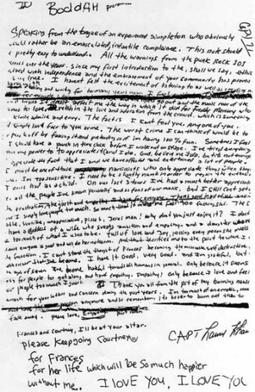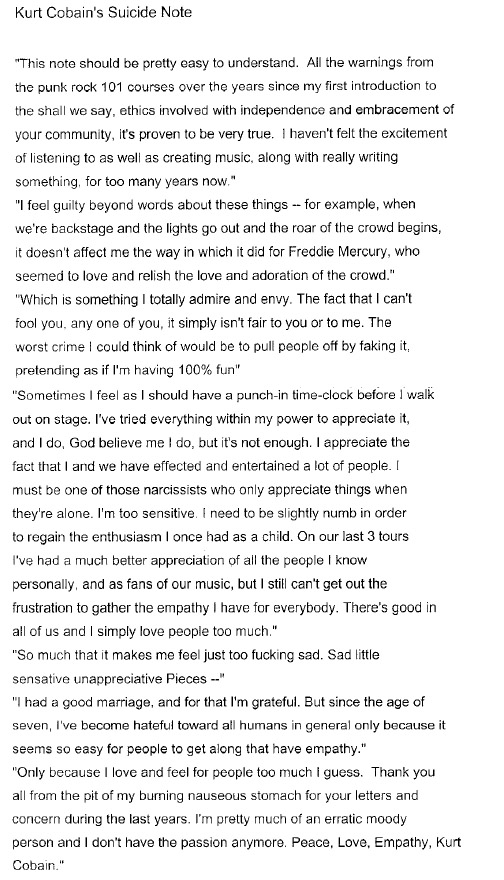Miles Peer Review for AJ
1. First
off I’d like to say I really like your project. I was kind of confused,
however, by how your film started and then how the rest of the film turned out.
You begin by painting an image of how blaxploitation films started and then how
African American directors became successful. I was assuming you were going to
talk about a wide array of different directors, but you end up only talking
about Spike Lee. Don’t get me wrong, I think how you talk about Lee is very
good and I don’t think you should change it neccesarily, but I think you may
want to make the beginning of your film a little more clear that you are going
to be examining Spike Lee. It may be as simple as saying that, I chose to
examine one auteur in particular, Spike Lee, for I believe he exemplifies many
of the different trends in the entire style of Blaxploitation films, but I
think that making it clear that you are going to be looking almost entirely at
the genre through Spike Lee is important and should/could be made a little more
clear. Also, for your conclusion I think you have two options: 1. you could
also relate this back to the first part of your film. Instead of talking about
how Spike Lee is the best model for the auteur theory regarding race relations
in America, you may want to say how he (again…) perfectly utilizes the style of
Blaxploitation films to get his overall message through. Does that make sense?
Your other option I think would be to actually change your introduction and
make it more about spike lee instead of Blaxploitation films in general. I
guess it comes down to whether you’re really talking about Spike Lee or the
genre in general. I think if you were to change your introduction, you wouldn’t
have to change much but I think it would be important for you to maybe say that
this is the foundation that Spike Lee came out of and then explain how this
information colors his work. Make sense? I just think there is a divide between
your introduction and the rest of the project.
2. I
think you use your medium so perfectly. Your narration is perfectly integrated
into the different video and imagery you have, but more than that you are also
able to talk in a way that neither gets lost behind nor overwhelms your video
aspects. More than that, though, the clips you chose are so visceral and
intriguing that your entire project is a good deal entertaining as well as
educational. I really don’t think you need to change too much of what you
already have.
3. I
think that you do integrate review and research really well, but you do end up
leaning on research much more than review. Or rather, I don’t think that one
necessarily dominates the other, but the different genre’s seem disconnected
from each other. Or, rather, I should say that it seemed to me like the first
part of your project was research, and then the middle part was a synthesis of
the two (and for these parts I think you do this really well), and then your
last part is more review. I think this works, but I’m not sure if our professor
wants it to be more consistently intertwined. One more thing, I think when you
are doing review you tend to kind of keep the same tone (not in voice but in
what your saying) as when your doing the research aspect. You sort of try to
distance yourself from your opinions, but I think it could help you if you did
write your review sections with more….confidence, and by that I mean that when
you talk about the influence and how well executed certain parts of his movies
are you should just say it more affirmatively. Other than that man, good
job.
Miles Peer Review for Madeline
1. So
it seems to me that you have a clear idea of what you want to say, but I’m not
sure it comes out in what you have written so far. I talked to you and you said
you were going to be examining how Pan’s
Labyrinth and Wings of Desire use
literary techniques(?) in order to create better art (right?). However, the
paragraphs you have written seem to me to be going in a different direction. In
them, you talk about the origins of film and then ask a question as to how the nature
of film became an art instead of a science. I think I see how you could
intertwine these two, as you are writing in review and research, but I’m not
sure it comes out yet. I think that it would be very useful for you to actually
begin your book talking about the two movies you are going to discuss. I think
that you could definitely still keep these paragraphs, but I’m not sure if
opening it with them is the best option if it isn’t the main focus of your
book. I could definitely see how you
look at Pan’s labyrinth and wings of desire to show how literary influence has
changed film and then relate it back to the origins of film. I hope that makes
sense, what I’m trying to say is that using these two movies to reflect upon
how literary influences changed film could be much more beneficial than
discussing the two apart from each other. I think that this could help you
achieve coherence and also a ‘through-line” being the two movies. Also, on the
other hand, I think that you could open up your book with these two paragraphs,
I really do like how they are written (especially the first sentence, “For a
little over a century now, some of the fictional stories that have most
captivated audiences and left lasting impressions on those who would shape the
field of the work to come have not been found in the pages of a book, but on
the screen of a theater”), but I think you should immediately dive into the two
movies and begin showing how these literary influences changed film. I think
this actually may be the most useful method, but I do still strongly think that
it is important that you intertwine these two ideas rather than separating
them. Maybe there’s just not enough written at the moment for me to say for
sure.
2. So
right now I don’t really see you utilizing images in your text, although that
makes sense as there is yet to be any real body paragraphs. I think that you
have a wide array of potential ways to use your photos, though. I think that
since your examining how literary influences change film it would be extremely
beneficial for you to look at the texts (or books) that influenced these two
films, perhaps quote them, and then use an image to show how the film utilized
these ideas. Since you are examining literature and film I think it would be
very easy to back up your analysis of the texts with images from the films, but
regarding the part of your essay that you have now and how it talks about how
film changed from a science to an art, I’m not sure how you would use images to
explain this. You could obviously use sources and stuff like that, but I’m
unsure about images. Definitely something to think about. Also, regarding the
images you have in your document now, I think you should grab photos that are
actual shots from the movies rather than posters and stuff like that, because
that’s where I think your real analysis will come from.
3. Again
its hard for me to say if this does integrate the different genres because as
you have it right now it is only research. I definitely do see how you will
integrate review, though, and I think that when you do write it, it will work
very well because your entire idea seems engrained in both forms. I also don’t
think you should have too much trouble integrating and transitioning between
the two as your research seems at least partially reliant on your review of the
movies (and Books?)

